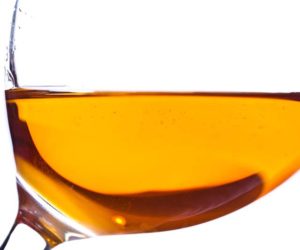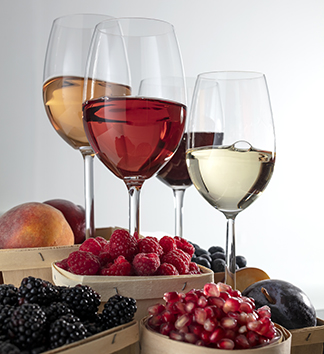
Whether it is to feed our winemaking hobby as we wait for grapes to ripen, put to use a surplus of fruit growing in the backyard, or simply because they are delicious summer sippers to enjoy on a warm evening, fruit wine should be embraced by every home winemaker. The options are nearly limitless when considering the varieties of fruit and combinations that can be made from them, not to mention dryness levels and even wine styles that can differentiate wines from the same fruit.
No matter where you live, there is sure to be locally grown fruit that will make a tasty wine. Getting ripe fruit in season is the best place to start when considering a fruit wine recipe; because starting with excellent fruit (just like when making wine from grapes) is a key to crafting an award-winning fruit wine.
Of course, starting with great fruit only lays the foundation for a great wine. There are also unique techniques used in fruit winemaking that are less common when making wine from grapes, such as sugar additions both prior to fermentation to bring up the Brix (chaptalization) and after fermentation (backsweetening) to better express the fruit character. Methods of collecting juice, nutrient additions, and even aging techniques are also unique to fruit wines.
If you have never made a fruit wine before, the best place to start is with a trusted recipe (and then tweaking it to match the fruit you have and style you want to make). So when we thought about pulling together a collection of fruit wine recipes, our first instinct was to collect recipes we knew for a fact would make gold medal-quality wine. For that, we reached out to amateur winemakers and asked them to share their recipes that resulted in gold medals in competition and asked for their secrets. We’re excited to share four unique fruit wine recipes that are perfect for summer.
Yellow Peach Wine (1.5 gallons/6 L)
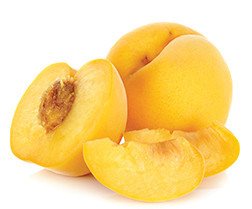
By Darren and Belinda Porter • Won Gold Medal in the 2022 WineMaker International Amateur Wine Competition (Stone Fruit category)
Our winemaking journey started in 2017 when I was working on my capstone project in graduate school. I was working on my Masters of Business (MBA) in Phoenix, Arizona. My capstone project required a paper with a word count of 10,000 words, plus a presentation to the professors in the department. My graduate school experience provided the opportunity to complete the research needed on how to lay out a vineyard, determine which fruit would grow in western Kentucky, and the chronic setbacks associated with a wet climate. Two years after graduate school, my wife and I moved back to Beaver Dam, Kentucky. That’s when we decided to make our first batch of wine. Peaches were the fruit in season.
For me, there’s nothing like biting into a perfect juicy yellow peach. So, when deciding which fruit would be our medium it was easy. We wanted those enjoying a glass to have the same experience, except without having peach juice running all over their face. Our first batch of wine was started August 10, 2020 which, by the way, was poured down the sink drain. Our second peach wine was the one that received a gold medal in the WineMaker International Amateur Magazine competition in 2022. This is our recipe for that wine, which can be scaled to meet your batch size.
Ingredients
3 lbs. (1.4 kg) yellow peaches (halved, pitted, frozen)
2 lbs. (0.9 kg) granulated sugar
Spring water (if needed to hit volume)
1.5 tsp. acid blend
1 tsp. pectic enzyme
0.25 tsp. grape tannin
0.5 tsp. yeast energizer
1 Campden tablet
0.5 tsp. potassium sorbate
LorAnn peach oil
Lalvin K1-V1116 yeast
Step by step
We source yellow peaches locally around mid-June and then slice each peach in half and remove the pit by hand. Then we place them in clear freezer bags weighing approximately 3 lbs. (1.4 kg) each for one gallon (3.8 L) of wine. I suggest freezing the fruit for a minimum of 90 days, as this will aid in the fruit producing more juice when thawing out. When the 90 days is up, or whenever you’re ready to make some wine, just remove the peaches from the freezer and allow them to thaw in your fermentation vessel (we use a 5-gallon/19-L food-grade bucket).
Add granulated sugar to the thawed peaches. Press the peaches and (if needed) add water up to one gallon (3.8 L). Add enough sugar to bring the specific gravity up to 1.090 (21.6 °Brix), which will result in a wine of about 12% ABV. This is generally around 2 lbs. (0.9 kg) of sugar, but will depend on the sugar concentration of the fruit. Take another Brix reading 24 hours after adding the sugar using a refractometer and adjust if necessary. We then add acid blend, pectic enzyme, tannin, yeast energizer, and one crushed Campden tablet and stir to mix.
Rehydrate and then pitch your yeast. We prefer Lalvin K1-V1116. Fermentation is around 65 °F (18 °C) for 12–15 days.
It’s imperative you press down the fruit cap and stir at least twice a day for the first six days. After that, stir just once a day. Once the hydrometer reads 1.000, fermentation is considered complete. Now it’s time to use a nylon mesh straining bag in a clean food-grade 5-gallon (19-L) bucket. Strain the fermented wine through the bag into the second bucket and squeeze the wine from the mesh bag. Allow the wine to rest for 24 hours so the lees settle to the bottom of the bucket.
Siphon the wine to a sanitized carboy. We add one Campden tablet per gallon (3.8 L) at this point to preserve the natural color and protect against bacteria. We recommend cold stabilization for 30 days at 27 °F (-3 °C). You will need to rack the wine after cold stabilization is complete.
Clearing peach wine can be done several ways; we prefer to use natural aging, however, you may also use bentonite. Once the wine is clear, we add 0.5 tsp. potassium sorbate stabilizer per gallon (3.8 L) to prevent renewed fermentation from backsweetening.
Backsweetening is accomplished by making a simple syrup. We use a 1:1 ratio of granulated table sugar-to-spring water. You want to bring the water to a boil, then add an equal amount of sugar. Backsweeten to taste; the sugar should help accentuate the peach flavor, but not overpower it with sweetness. This took about 10 cups of simple syrup for one gallon (3.8 L) of wine (with this addition, the resulting wine volume is a little over 1.5 gallons (~6 L). To really kick up the peach flavor, which can sometimes be dulled by fermentation, add 0.625 oz. (18.5 mL) LorAnn Peach oil 24 hours after the potassium sorbate addition. Remember, fruit wine peaks at 15 months.
Plum Wine (6.5 gallons/25 L)
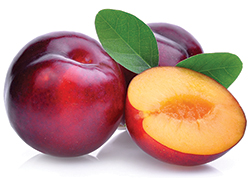
By Kathleen Ondrus • Won Gold Medal in the 2021 WineMaker International Amateur Wine Competition (Stone Fruit category)
I did not like wine until my husband and I took a trip to Napa, California, in 2007. A woman at St. Supéry Estate Vineyards & Winery took the time to teach me about wine. After trying a Moscato, I fell in love. I have a very curious mind so my husband bought me everything I’d need to start making my own wine. I made a few kits and then in 2011 we moved to Grand Junction, Colorado, only to find out I moved to the Grand Valley AVA haven.
In 2013 I started making wine with fresh grapes and entering competitions to get honest feedback. I make a large array of wines — from Vitis vinifera varieties such as Cabernet Sauvignon and Muscat, to hybrids including Crimson Cabernet and Brianna, as well as fruit wines.
This particular wine came about after a friend with a few cherry plum trees in her yard called me and asked if I wanted some plums (she knew I made wine but also did not want to pick them up to mow around them). After picking for half a day, I ended up with approximately 90–100 lbs. (41–45 kg) of plums. I washed them, pitted, halved, and froze them. After a couple weeks in the freezer and trying to research which yeast I was going to use, I thawed them into three separate batches using nylon mesh bags for easy extraction of fruit. Since I do not get YAN (yeast assimilable nitrogen) levels tested on my fruit wines, I count on recipes and trials. This was my first plum wine, which fortunately hit the mark on what I was looking for.
Ingredients
30 lbs. (14 kg) cherry plums (halved, pitted, frozen)
20 lbs. (9 kg) table sugar
~5 gallons (19 L) water
7.5 tsp. acid blend
5 tsp. pectic enzyme
5.9–9.5 tsp. Go-Ferm (yeast-dependent)
2.5 tsp. Fermaid K
1.25 tsp. grape tannins
3.25 tsp. potassium sorbate
2.5 g diammonium phosphate (DAP)(divided for two additions)
80 ppm KMBS
Lalvin BA11, Laffort Zymaflore® Delta, or Laffort Zymaflore® VL1 yeast
Step by step
This is a recipe for a single 5-gallon (19-L) batch, which I made three of at the same time as I had so many plums and used a different one of the three listed yeast strains for each one. I ended up blending the three batches together post-fermentation. Note that both Laffort strains are only sold in 500-g quantities. I love the strains and make enough that I purchase that much, but others may choose to stick with BA11 or find other yeasts to make their blends.
After thawing the plums and bagging them, I put the fruit in a bucket and added water up to 6.5 gallons (25 L), sugar, acid blend, pectic enzyme, and tannins, giving each batch equal amounts. After mixing well I added 30 ppm KMBS to each. The next day I checked my Brix levels to make sure they were all the same at 21 °Brix and adjusted as necessary. After my adjustments, I rehydrated each yeast:
Batch #1: Lalvin BA11 8 g yeast. Rehydrated yeast in 115 °F (46 °C) water with 9.5 g Go-Ferm. Added to must when the temperatures were within 20° F (11 °C) of each other.
Batch #2: Laffort Zymaflore® Delta 4.5 g yeast. Rehydrated yeast in 115 °F (46 °C) water with 5.9 g Go-Ferm. Added to must when the temperatures were within 20° F (11 °C) of each other.
Batch #3 Laffort Zymaflore® VL1 4.5 g yeast. Rehydrated yeast in 115 °F (46 °C) water with 5.9 g Go-Ferm. Added to must when temperatures were within 20 °F (11 °C) of each other.
Each batch was fermented at 65 °F (18 °C). Twenty-four hours after yeast addition (after the lag phase) I added 2.5 tsp. Fermaid K to each batch. Since each of these yeasts had high nutrient needs I added 1.25 g DAP when each must was down to 15 °Brix.
On day five I removed the bagged fruit. By day nine the Brix was at 11, so I added the second 1.25-g DAP addition. Through fermentation, BA11 had a great flavor and beautiful nose of the plums. Delta had a little off-flavor, but I wasn’t sure why. The VL1 batch had a nice plum flavor and nose, which I enjoyed better than Delta but not as much as BA11.
After each fermented to dryness, 50 ppm (or 1.64 g) KMBS was added. After racking until clear I added potassium sorbate and did sugar/acid/finishing tannin trials and finally blending trials. All were a little high in acid so potassium carbonate was added to get acidity around 8 g/L.
The flavor on the BA11 was great just the way it was so I sweetened with sugar (I do not use simple syrup because I do not like the added water). I did finishing tannin trials with the BA11 batch but I thought it was good the way it was after lowering the acid and adding sugar. Both Batch #2 and Batch #3 trials of Laffort Quertanin Sweet proved that a 60-ppm addition was best in finishing tannin trials so 1.14 g was added to each. The BA11 batch was sweetened with 35 g/L of sugar, with the other two being sweetened with 30 g/L.
Then came the blending trials. Each one was good on its own but in the blending trial they really brought together a well rounded flavor, nose, and mouthfeel. I liked the full blending of each so I blended all 5 gallons (19 L) of each. After blending I cold stabilized at 32 °F (0 °C) for six weeks before bottling.
Blueberry/Blackberry Wine (5 gallons/19 L)
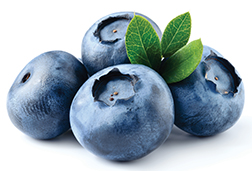
By Larry Roux • Won Gold Medal in the 2022 WineMaker International Amateur Wine Competition (Berry Fruit category)
My love of wine began when I stayed in the small town of Gaioli in the Chianti region of Italy. Chianti led to the bigger bolder reds (I had the advantage of being able to drink lots of Chateau Petrus when it was affordable!). But age tends to mellow us and like many older “big, bold red wine” drinkers my tastes began to favor more fruitiness and acids over the years.
I started making wine in 2013 when a couple co-workers started brewing beer and invited me to join them. While I do not dislike beer, I prefer a nice glass of wine. I started with kit wines, studying what each step and each addition was meant to do. After a couple kit wines I began adjusting the kits (especially timings and dropping the fining agents and replacing them with longer bulk aging). Before long I was buying juice from local wineries, frozen pails, and ultimately began growing a small number of my own vines (Marechal Foch and Traminette).
My blueberry/blackberry wine is made from blueberries and blackberries I harvest from bushes in my backyard. The blueberry bushes were planted by an earlier owner over 70 years ago and the blackberries were provided some years ago by a helpful bird who deposited the seeds along my yard’s perimeter. When life gives you berries, make wine!
I have made 100% blueberry wine several times over the years and have found that a little watering down really made it into a wonderful summer wine. Adding the blackberries gives the wine a bit more depth and character. I was a little worried about the combination when making my first batch of blueberry/blackberry wine, but was so pleased with the outcome I don’t think I will do 100% blueberry wines again.
Ingredients
13 lbs. (5.9 kg) blueberries
10 lbs. (4.5 kg) blackberries
~9 lbs. (4.1 kg) table sugar
~4 gallons (15 L) water
2.5 tsp. pectic enzyme
2.5 tsp. acid blend
1 tsp. wine tannin
1 tsp. yeast nutrients
Lalvin EC-1118 yeast
5 Campden tablets (may need more to adjust SO2 levels)
2.5 tsp. potassium sorbate
Table sugar to backsweeten
Step by step
I pick my own berries and freeze them since they don’t all ripen at the same time. Freezing the berries has the added benefit of breaking down the cell walls so they give up their juice much quicker. You will want more blueberries than blackberries as blackberries have stronger flavors and can overpower the blueberry quickly. I’ve found that a 60/40 blend results in a wine that expresses both the blueberry and blackberry flavors.
Place the thawed berries in a muslin bag and add them to a fermenter. Add around 4 gallons (15 L) of water to bring the total volume in the fermenter up to 5 gallons (19 L). Make a simple syrup with the sugar and as little water as necessary and add enough to bring up the specific gravity to 1.092 (about 9 lbs./4.1 kg). With the must in the mid-70s °F (~23 °C), add the pectic enzyme, acid blend, wine tannin, and yeast nutrients. Let the mixture soak for 24 hours Rehydrate the yeast as recommended and add it to the must.
Blueberries can be difficult to get a good fermentation going as their skins contain enzymes that seem to inhibit fermentation. I have found yeast nutrient is a must when fermenting blueberries. Rehydrating the yeast prior to pitching also helps a lot.
Once fermentation is well under way (about 24–48 hours) move the must to a slightly cooler spot. My basement wine room is about 67 °F (19 °C) year-round so I move it there. Allow the fermentation to complete (mine took 17 days).
Remove the berries, pressing the muslin bags lightly to extract any remaining juice. Let the wine sit for a few hours to allow any sediment stirred up by the berry removal to settle to the bottom. Rack the wine off of the sediment and add 5 Campden tablets. Allow to sit for a month to clear.
After a month, rack off any remaining dead yeast or sediments. Test SO2 and add Campden or potassium metabisulfite to bring to 30 ppm. Degas the wine to help further clarify the wine.
After another month (or until the wine is totally clear), perform a final racking. Test for SO2 and add Campden or other potassium metabisulfite to bring back to 30 ppm. Add 2.5 tsp. sorbate and let sit for 24 hours.
Fruit/berry wines really need a little sweetness to bring out the flavor of the fruit. I do bench trials to decide what sweetness level tastes best with the berries I have. I have found backsweetening with simple syrup to bring the specific gravity back up to 1.014 tastes best to my palate.
It is important to backsweeten in stages and taste/remeasure along the way. The perception of sweetness can climb quickly and it is always easier to add more sugar than compensate for too much sweetness.
Bottle the wine once it tastes the way you like. I aged this wine eight months in bottle prior to submitting it for competition. If you are going to bulk age, do this prior to the final racking/backsweetening stage.
Pomegranate and Chocolate Milano Wine (1 gallon / 3.8 L)
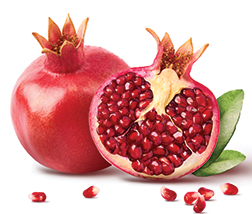
By Susan Morgan • Won Gold Medal in the 2022 WineMaker International Amateur Wine Competition (Other Fruits category)
I got into winemaking because I had so much more fruit than I could eat. Four years ago, a colleague suggested making fruit wine and got me started. After that, I was hooked! I have loved pomegranates since I was a kid. We have three pomegranate trees in our yard – Kashmir (dark seeds with an intense sweet-tart taste), Parfianka (bright red seeds with sweet wine flavors), and Ambrosia (pale pink seeds with a light, sugary taste). To make the pomegranate wine, I mix all three together.
At a Contra Costa Wine Group (CCWG) club event, one of our members (Bob Joakimson) brought in his award-winning chocolate milano raspberry wine. One taste of it and I thought — THAT’s what I need for my pomegranates! I cornered Bob and pumped him for his recipe, and (after much experimentation) used a variation of it in this pomegranate wine. Chocolate and pomegranates are so lovely together!
Ingredients
1 gallon (3.8 L) pomegranate juice extracted from the seeds (Note that the juice will contain some sediment that is difficult to separate. It is easier to just leave it in the mix and rack off the must later.)
0.5 cup organic raisins
3 strong black tea bags and half cup of water
~1.75 lbs. (0.8 kg) granulated white sugar
~3 cups water
~0.5 tsp. acid blend powder
0.5 tsp. pectic enzyme
1 crushed Campden tablet
1.2 g Lysozyme (divided: 0.4 g + 0.8 g)
1.25 g Go-Ferm
Lalvin K1V-1116 yeast
1 g Fermaid K
Bentonite and Sparkolloid
Backsweetening & Flavoring
1 crushed Campden tablet
0.5 tsp. potassium sorbate
1 cup brandy
1.75–2 cups sugar (depending on your sweet tooth)
0.67 cup Chocolate Milano Torani syrup
Step by step
Heat up half a cup of water and add 3 tea bags of strong black tea. Let it steep 5 minutes or more. Remove tea bags and add raisins that have been rinsed and strained. Let the raisins sit in the hot tea water until they plump up and are soft (several hours or more). Mash up or blend to make a “raisin mash.”
Dissolve the crushed Campden tablet in a small amount of water and add to the pomegranate juice in the primary fermenter. Wait 12 hours then dissolve the pectic enzyme powder in a small amount of water and mix into the must. After 12 hours, prepare the next additions.
Gently sprinkle 0.4 grams of the lysozyme over a quarter cup of water and let sit without stirring. Stirring the lysozyme will cause it to form an undissolvable blob — NOT what you want! Have patience — it may take several minutes to fully dissolve.
Heat 3 cups of water until hot (120 °F/49 °C or more), and slowly add in the sugar while stirring. Keep stirring until all of the sugar is dissolved. Allow to cool and then add to the must.
Add the raisin mash to the must. Dissolve the acid blend in a small amount of water and add it to the must. Stir well and measure the Brix and pH, and adjust as needed. Aim for 21 °Brix and a pH of 3.5.
Make the yeast starter with the GoFerm and yeast (following package directions). When ready, acclimate the yeast with a little of the must. Add the fully dissolved lysozyme to the must, stir, then pitch in the yeast and stir well. Stir daily during fermentation. After two days, dissolve the Fermaid K in a small amount of water and then stir it into the fermenting must. After another two days, dissolve 0.8 grams of lysozyme in a half cup of water (without stirring). When fully dissolved, add to the must and stir. When fermentation slows to a crawl (1–2 days later) rack into the carboy and fit with an airlock. Rack again every month or so, leaving the sediment at the bottom behind. After a few months you can fine with bentonite first, then wait another month and fine/polish with Sparkolloid. When the wine is crystal clear it is time to begin the backsweetening process.
Dissolve the crushed Campden tablet in water and add to the wine. Dissolve the potassium sorbate in water and add it to the wine. Mix, cover, and let sit for one day.
Conduct bench trials with the brandy, sugar, and chocolate Milano syrup additions. When you find the right amounts for your taste, add each to the wine. Mix and taste the wine and adjust as needed to reach that “perfect balance” (this is the tricky and fun part — invite friends over to help!). The final ABV of the wine after fortification should be around 13%.
When ready, bottle the wine and serve chilled.




